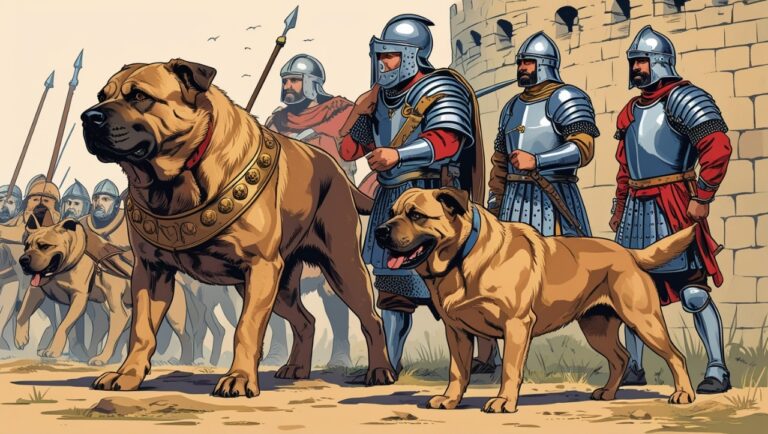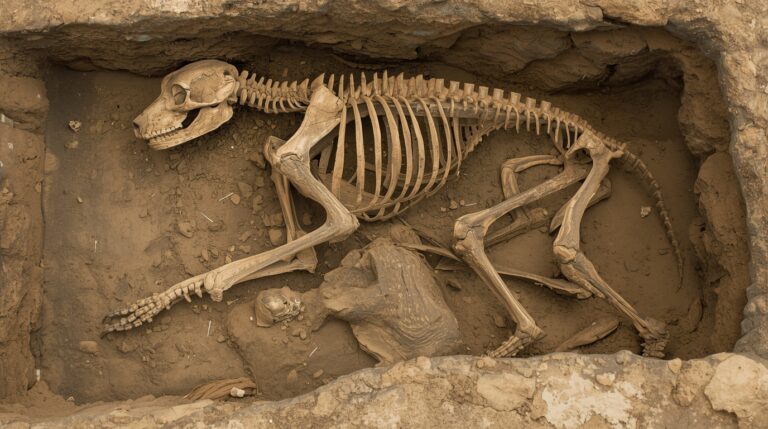Dogs and the Black Plague: Myths & Truths

Introduction: Dogs Amidst the Black Death
The Black Plague, which devastated Europe in the mid-14th century, left behind more than death—it produced centuries of myths, fear, and superstitions, many of which involved dogs. Were they spreaders of disease, loyal companions, or omens of death? This article explores the truth and fiction surrounding dogs during one of history’s deadliest pandemics.
Overview of the Black Plague
The Black Death, caused by the bacterium Yersinia pestis, arrived in Europe around 1347 CE, killing an estimated 25–50 million people, nearly a third of the continent’s population.
- Spread primarily by fleas hosted on black rats
- Traveled through merchant ships, trade routes, and urban centers
- Symptoms included buboes, fever, and widespread internal infection
Dogs, often close to humans, naturally became part of the plague narrative.
Dogs in the 14th-Century Pandemic Landscape
In both urban and rural environments, dogs were everywhere:
- As watchdogs, shepherding animals, or companions
- Roaming streets, villages, and monasteries
This physical proximity led to assumptions—both rational and irrational—about their connection to the disease.
Myth 1: Dogs Spread the Plague Like Rats
A common myth suggests dogs, like rats, were major plague vectors.
- This belief likely stemmed from fear and lack of medical understanding
- The similarity in size and close contact with humans added to suspicion
Yet historical and scientific evidence does not support this claim.
Truth: Dogs Had a Lower Role in Transmission
Modern science confirms that:
- Rats, not dogs, were the primary carriers of infected fleas
- Dogs had lower flea-host compatibility, reducing their role in plague spread
- Most dogs were incidental hosts rather than active vectors
They were not immune, but they were not major culprits either.
Myth 2: Dogs Were Immune to the Black Plague
Some medieval sources claimed dogs never got sick, creating the myth of their immunity.
- The apparent absence of symptoms led to assumptions
- These stories reinforced ideas of supernatural endurance
But modern science shows a more nuanced reality.
Truth: Dogs Could Carry Fleas but Rarely Infected
Dogs can carry fleas, including those infected with Yersinia pestis.
- However, they rarely contracted the plague themselves
- Their body chemistry and flea-host interaction reduced transmission rates
Infections in dogs were possible but not common, and dogs were rarely symptomatic.
Canine Immunity: Fact or Fiction?
Dogs have biological resistance, not complete immunity:
- Their higher body temperatures make it harder for the bacterium to multiply
- Cases of infection were more likely to be mild or asymptomatic
- Modern veterinary studies support the theory that dogs are low-risk carriers
So while not invulnerable, dogs were relatively protected.
Myth 3: Dogs Were Omens of Death
Many believed that dogs, especially black ones, heralded death.
- The appearance of stray dogs near plague houses sparked folklore
- “Black Shuck” and other spectral dogs became symbols of impending doom
These ideas intensified panic and sometimes justified the killing of strays.
Truth: Dogs as Companions and Early Detectors
Ironically, dogs may have alerted humans to danger:
- Barking at dead or sick individuals
- Staying close to owners during illness
- Avoiding certain areas or homes
These behaviors were misinterpreted as supernatural foresight.
Spectral Dogs and Death Omens in Plague Folklore
Legends of supernatural dogs spread rapidly:
- Barghest in Northern England
- Black Shuck in East Anglia
- Hellhounds across Europe
These tales were rooted in pre-Christian mythology, but the plague era reignited belief in their presence.
Dogs in Medieval Religious Interpretation
In religious contexts, dogs were seen as:
- Loyal protectors in spiritual warfare
- Or unclean creatures tied to sin
Depending on interpretation, dogs were either divine allies or plague agents.
also read this Medieval and Renaissance Dog History
Dog Behavior and Human Perception During Plague
During the chaos, dogs were seen:
- Scavenging unburied corpses
- Guarding their dying or dead owners
- Roaming plague-stricken cities
This created mixed perceptions—horror, pity, and awe.
Dogs in Literature About the Plague
In Boccaccio’s Decameron, dogs appear as both background figures and symbols of abandonment.
- Chronicles mention dogs following carts of the dead
- Some records describe dogs refusing to leave plague houses
These literary portrayals blended observation with symbolism.
Urban Responses to Dogs During the Black Death
Cities responded by:
- Culling stray animals
- Enacting ordinances to remove dogs
- Associating dogs with disease spread
While some areas protected dogs, many viewed them as threats to sanitation.
Dogs and Corpses: Scavenging and Survival
One of the most disturbing truths:
- Starving dogs fed on plague victims
- This was not malicious but animal survival behavior
Such sights deeply shocked medieval citizens and reinforced fearful myths.
Dogs as Companions of the Dying
Despite the horror, there are moving accounts of:
- Dogs remaining by owners’ bedsides
- Dogs howling when their masters died
- Dogs refusing food after loss
These stories contributed to the cultural image of canine loyalty, even in death.
Dogs vs. Cats During the Plague
- Cats were often killed due to superstitions about witchcraft
- Dogs were sometimes spared because of their perceived loyalty
Ironically, killing cats may have worsened the rat problem, indirectly boosting plague spread.
Post-Plague Attitudes Toward Dogs
After the pandemic:
- Dogs regained their place in households
- They were increasingly seen as symbols of loyalty and survival
- Plague folklore persisted, but attitudes softened
The loyal dog became an enduring motif of resilience.
Modern Reflections on Dogs and the Plague
Modern research confirms:
- Dogs were not key plague agents
- Most myths are rooted in fear, not fact
- Dogs served a protective, emotional, and even spiritual role during the crisis
They were victims of misunderstanding, but also survivors and guardians.
Conclusion: Dogs Between Myth and Medicine
In the saga of the Black Plague, dogs stood at the intersection of biology and belief. They were seen as:
- Harbingers of death
- Companions of grief
- Symbols of loyalty
Science tells us dogs were unlikely plague spreaders, yet myths made them central to the fear-filled imagination of a dying world. Today, they stand as reminders of love, loss, and survival in humanity’s darkest chapters.





